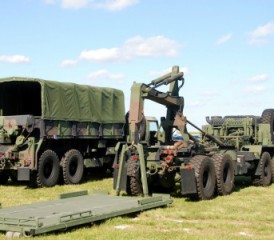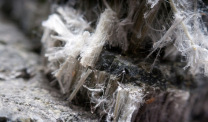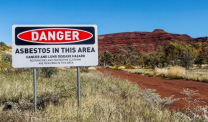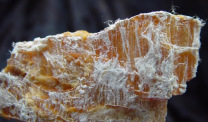Demolition of Camp Roberts Ends Army’s Asbestos Era in California
Asbestos Exposure & BansWritten by Tim Povtak | Edited By Walter Pacheco

There was so much asbestos, lead-based paint and other contaminants throughout the 658 abandoned buildings at Camp Roberts that the U.S. Army had to create its own on-site hazardous waste landfill before the demolition could begin.
That’s a scary thought for the hundreds of thousands of military veterans who once lived and worked there.
They marked the end of an era earlier this month at Camp Roberts, the largest military training facility in California, when a $20 million demolition project began with considerable fanfare.
Many of the structures were abandoned long ago, and fell into disrepair, becoming an eyesore along Highway 101 near San Miguel, and to anyone venturing onto the base.
They were barracks, chapels, administrative offices, supply huts, warehouses and mess halls that were built in the early 1940s, a time when the American military was falling in love with everything asbestos which served as a wonderfully versatile insulator and fire retardant. It also was abundant and economical.
Old Soldiers Exposed to Asbestos
Soldiers from the 1940s, ’50, ’60s, ’70s and early ’80s were housed and trained there, unknowingly putting themselves at risk for future health problems. Asbestos is the primary cause of mesothelioma, a rare cancer that has a latency period of up to 60 years before showing obvious symptoms.
Most have been empty for 30 years, waiting for the slow-moving, military chain of command to finalize the orders and receive the proper environmental approval to start the demolition.
“It’s kind of different to think of all the people who went through here,” retired Col. John Scully told the San Luis Obispo Tribune. “There are a lot of memories.”
Camp Roberts, which still was used for troops before deployment to Iraq and Afghanistan in more recent years, has been modernized, and is operated today by the California National Guard.
50,000 Called Camp Roberts Home
In its heyday, Camp Roberts was home to 50,000 soldiers preparing for war. Much of it was built in 1940 and 1941, in anticipation of America being pulled into World War II. But as the decades progressed and the number of U.S. military troops decreased, buildings were no longer used.
Many fell into disrepair. Many today are dilapidated shells of once bustling hubs of activity. Insides have been gutted. Outsides are weathered and worn. Entire blocks are closed off to everyone.
There were so many contaminants in the older construction that the military discovered it would be less expensive to build a hazardous waste landfill than to try and haul away everything. It exemplified the size of the problem that came with all the good that Camp Roberts did. This base was not alone. Asbestos was among the top contaminants at 32 Army installations in the United States before they were close during the ’90s, costing the government an estimated $1 billion in cleanup.
“There’s a lot of history here,” Brig. General Keith Jones told the Tribune. “An old facility like this touched a lot of souls.”
Veterans Hit Hard by Mesothelioma
Through the Korean and Vietnam eras, the older side of Camp Roberts remained a busy place. It was a time when Americans were constructing houses and commercial buildings filled with asbestos.
Military personnel from those eras have been hit especially hard by asbestos-related illnesses. An estimated 30 percent of mesothelioma cases diagnosed in America annually are veterans.
Older military bases throughout the country were notorious for high concentrations of asbestos because military leaders believed at the time it was the right thing to do, unaware of the long-term dangers that were lurking.
In California, it’s all coming down now, requiring extra care in the demolition process to avoid spreading the contaminants.







